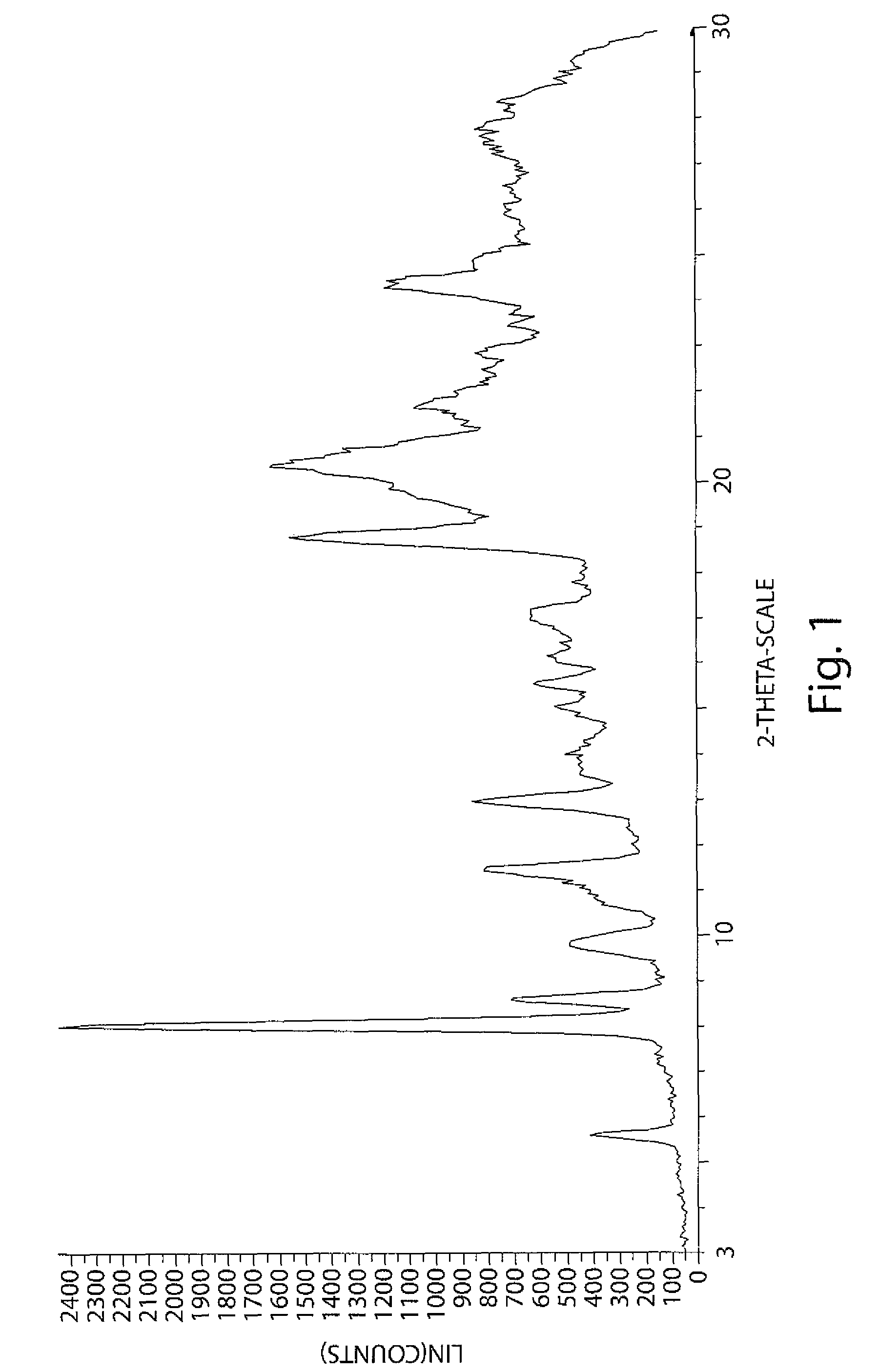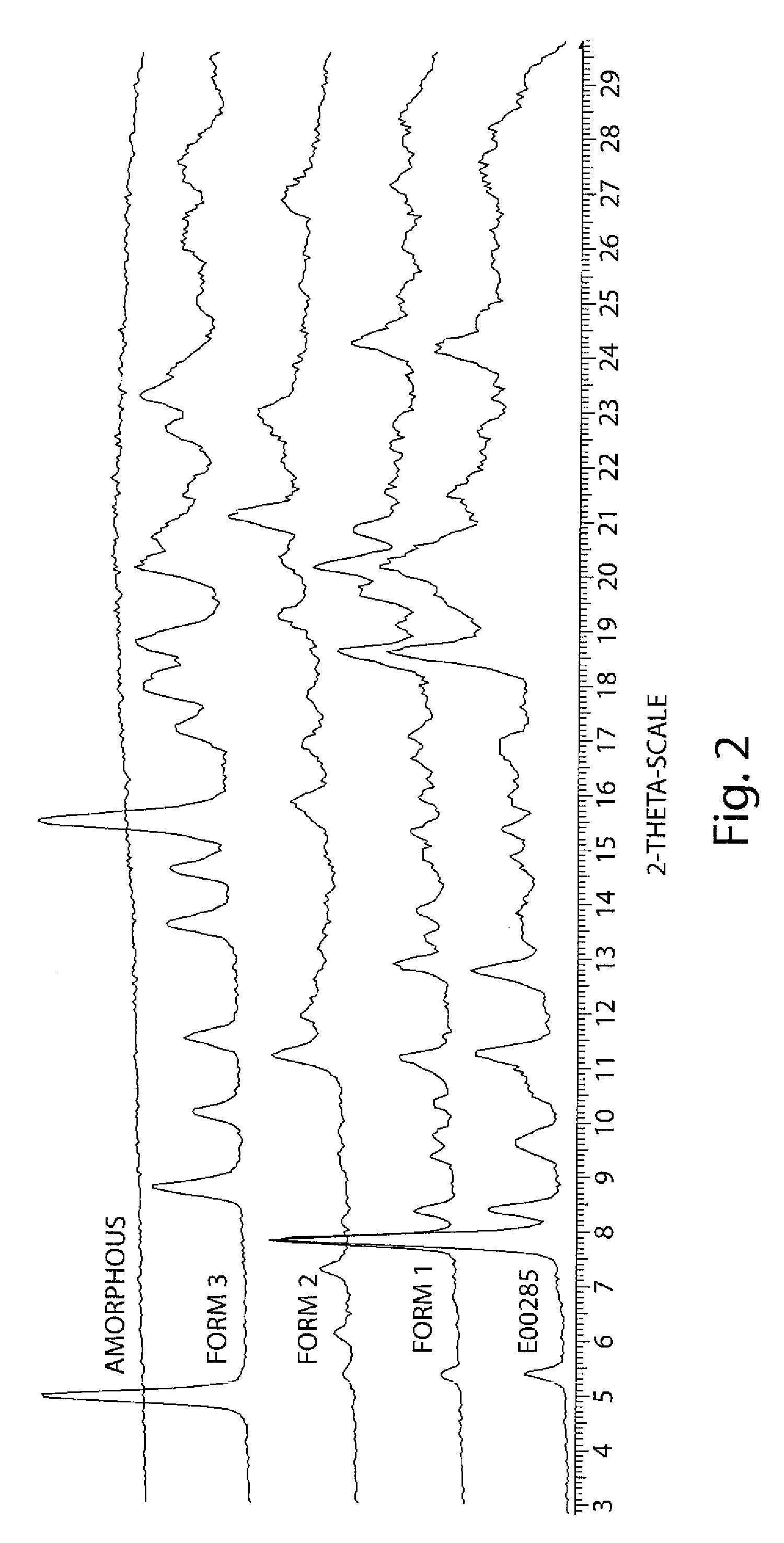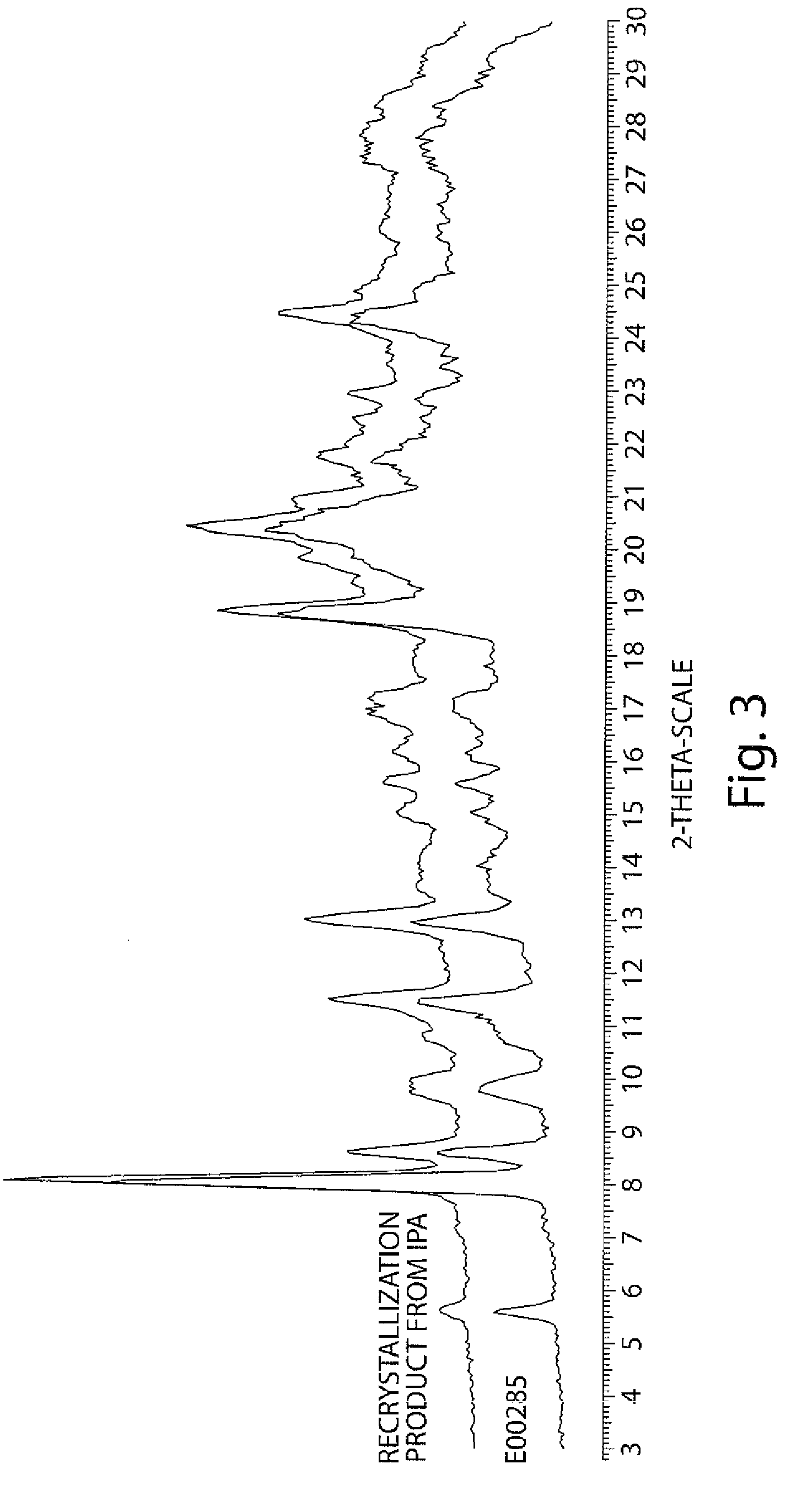Salts and polymorphs of 9-(2,2-dimethylpropyl-aminomethyl) minocycline
a technology of dimethylpropylamine and minocycline, which is applied in the field of salts and polymorphs of dimethylpropylaminomethyl minocycline, can solve problems such as fatal overdosage of the compound
- Summary
- Abstract
- Description
- Claims
- Application Information
AI Technical Summary
Benefits of technology
Problems solved by technology
Method used
Image
Examples
example 1
Synthesis of 9-Alkyl Aminomethyl Minocycline
[0208]
[0209]Minocycline hydrochloride (compound 2) was dissolved in methylsulfonic acid or hydrofluoric acid with methylsulfonic anhydride or similar water scavenger acid such as triflic acid. N-hydroxymethyl phthalimide was added to the reaction mixture. The mixture was stirred at 20-35° C. until the reaction was complete. The acid solution was added to an ice / water mixture, and triflic salt can be readily precipitated, filtered and collected. The solid was re-dissolved in acetone and brought to a neutral pH with base. The product was precipitated by the addition of water. If the triflic acid was present as scavenger the product can be precipitated without neutralization. The product was isolated as a mixture of the bis and tris alkylated product. The isolated material of this reaction was enriched in the desired bis ratio (90%).
[0210]The solid was suspended in the EtOH or MeOH. Aminolysis was carried out by using methylamine. A phthalami...
example 2
Purification of Compound 1
[0213]Crude 9-(2′,2′-dimethylpropyl aminomethyl) minocycline freebase (40 g) was dissolved in 150 mL of buffer A (0.1% aqueous solution of methanesulfonic acid—MSA) and the pH was adjusted to 2-3 with MSA.
[0214]The solution was filtered and injected into an HPLC and the product was eluted with an isocratic gradient of 94% buffer A and 6% acetonitrile. The product fraction collection was initiated when the product peak was detected. Each fraction was analyzed and an acceptance criterion of greater than 80% AUC of the main peak was used for the early product fractions. When combining fractions, the level of impurities and relative concentration of the pooled fractions was factored into the selection criteria that meet the final product specifications. To the product fractions was added a 10% aqueous solution of sodium sulfite equal to 10% of the original volume of the collected fractions.
[0215]The following example represents the output of a single injection....
example 3
Preparation of Crystalline HCl Salt of Compound 1
[0218]Compound 1 (13 g) was dissolved in acetone (300 mL), filtered and the filter was additionally washed with acetone. The combined filtrate and washes was cooled to 5° C. To the combined filtrate and washes, a solution of concentrated HCl (3.9 mL) in acetone (79 mL) was slowly added with vigorous stirring. The resultant slurry was stirred in an ice bath for 15 minutes and filtered off.
[0219]The first crop of solid was washed with cold acetone and pentane and dried in vacuo for 48 hours, yielding 13.7 g of yellow amorphous solid. The flask with saturated filtrate was covered with aluminum foil and left for 2 weeks during which the growth of single crystals was observed. Crystals were collected by filtration and washed with hexane.
PUM
| Property | Measurement | Unit |
|---|---|---|
| temperature | aaaaa | aaaaa |
| temperature | aaaaa | aaaaa |
| temperature | aaaaa | aaaaa |
Abstract
Description
Claims
Application Information
 Login to View More
Login to View More - R&D
- Intellectual Property
- Life Sciences
- Materials
- Tech Scout
- Unparalleled Data Quality
- Higher Quality Content
- 60% Fewer Hallucinations
Browse by: Latest US Patents, China's latest patents, Technical Efficacy Thesaurus, Application Domain, Technology Topic, Popular Technical Reports.
© 2025 PatSnap. All rights reserved.Legal|Privacy policy|Modern Slavery Act Transparency Statement|Sitemap|About US| Contact US: help@patsnap.com



